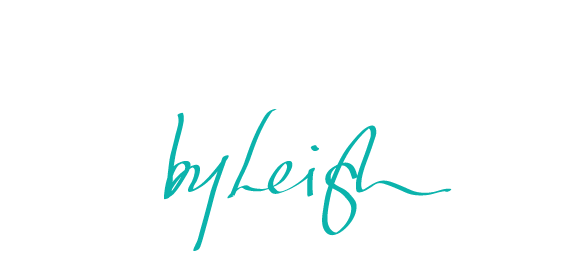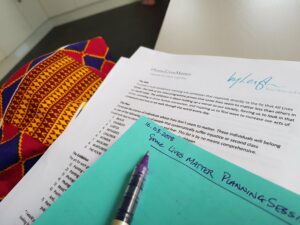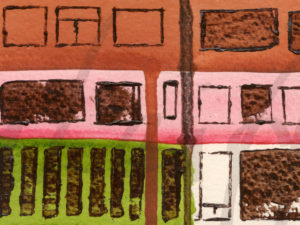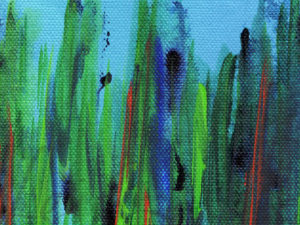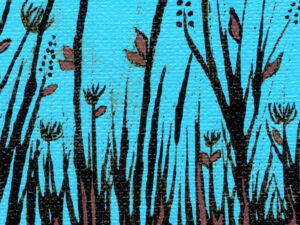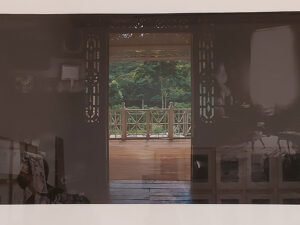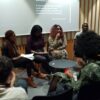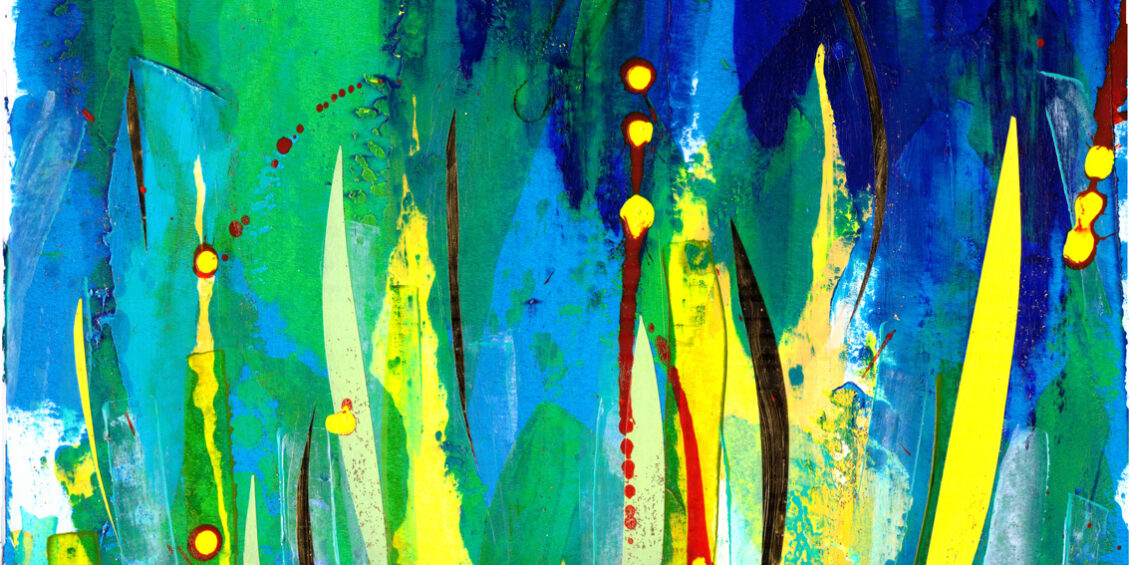
Featured Image: close up of We Bring the Light by Leigh
05 Nov 2019
Thank goodness for mind numbing tasks and YouTube.
Sitting in work and labouring over the most mind-numbing project possible, I was starting to fret over not having enough time to read more for my SIP. I was also fretting over falling asleep at my desk and being seen by my boss. The work was that boring.
So capitalising on the whole women-can-multi-task schtik, I searched “art curation for social change” on YouTube, chose about 10 videos from the results and started listening. I figured, at best – I would find all the answers I was seeking, at worst – it would at least keep me awake. The reality was I didn’t find every answer I sought but I did find new information and new questions I didn’t know and hadn’t asked myself. The result was some very interesting answers, and of course, even more interesting questions.
Here’s the run down of my 2-day love affair with YouTube that led to me dropping my headphones in a eureka burst of “Oh my God, why didn’t I think of that before?” that had my colleagues turning to look at me with quizzical eyebrows, and a few commiserations for the poor dear who’s lost her mind in the corner there.
Video 1: Art for Social Change | Emily Onufer | TEDxYouth@RVA
Glad I listened to this first, it was like the warm-up session. Onufer used an art exhibition to investigate changes to the bus service in Richmond Virginia. Ultimately this video confirmed a lot of my beliefs about art’s ability to facilitate social change. For Onufer, it provided a mechanism for all her stakeholders to meet, discuss and contribute to the changes and solutions for the bus service. Onufer also mentions getting the opinion of the users, something she admits that she originally overlooked but quickly rectified. This made me wonder how I could get the voices of users to help me with this research? Could I put out a call on social media for anyone who felt that an art exhibition changed their way of thinking or caused them to take action? Hmmmm…
Video 2: Art is a weapon for social change: Dr Tammy L Brown at TEDxXavierUniverstiy
This was especially interesting because she couched her lesson in the historic social injustice meted out to Black people, specifically the transatlantic slave trade. It made me consider how I would render the topic of injustice? Is my intention to present stories of incidents of social injustice or could I tell these stories in a particular context to illustrate a point? And how would I protect the integrity of the story if I was manipulating it to emphasise a point?
Dr Brown shows how the art she discusses educates, politicises, and builds awareness of the social injustice of slavery. She also points out another function of this art: to uplift and elevate spiritually. I particularly want to take note of the Trinidadian-born (woohoo!) American dancer Pearl Primus’ quote:
“This dance is truly a social weapon. Its results are not immediate, for education is a slow process, but it contributes something” (Brown, 2014, p. 12:04)
It’s a statement that makes me question how much I can reasonably expect to measure the impact of my proposed exhibition and to what extent such a measure is truly necessary or feasible. I suspect the answer to that, is only in so much as it allows me to secure funding to produce the exhibition at all.
Video 3: Art as activism | Marcus Ellsworth | TEDxUTChattanooga
At 01:42 in this video Ellsworth talks about small scale change because
“wherever art is being created and engaged people, we see it, we see people being inspired, being motivated, being moved” (Ellsworth, 2014, 00:01:42)
The poet then talks about a performance that changed an audience member’s view of homosexuality. It was the first time he’d considered how his work actually shifted people’s social parameters. For me, this again raised the issue of getting users input. What makes a person respond to the creative expression of another? Only members of the public can tell me that, so how do I get their opinions? And which opinions do I want? Any particular age, education, location, nationality, ethnicity, religion, gender, sexual preference, and so on? For an exhibition open to the public, does my demographic matter, other than – people living in the UK that like art? Do they even have to like art?
More to consider.
Video 4: Museums should activate multiple senses, not just the eyeball | Ellen Lupton | TEDxMidAtlantic
This curator had me in stitches with her talk about the exhaustion of the eyeball and how reliant most exhibition are on visual stimuli. She really made me think about multi-sensory art and communication through multiple senses. Not only does that tie into my knowledge of inclusive teaching practice but it would really strengthen audience experience and memory of an exhibition if more than just one sense was impacted. File this as an After-SIP consideration. Lupton also listed some amazing examples of multi-sensory art and design that shifted me from thinking visually. A really inspiring talk! And with this shift, does my intended venue need to change?
Video 5: 116 Artist / Curator Chuck Gniech and The Art of Social Change
This podcast is an interview. Podcast host Sergio Gomez of Art NXT Level interviews Chuck Gniech: artist, associate Professor and Collections Curator for the Corporate Fine Art Collection of The Illinois Institute of Art-Chicago. Their focus is Chuck’s art and curation around social change but first Gomez opens with a little ad about his webinar on how to write a killer exhibition proposal – why didn’t I ever think to look that up? *quickly adds this to key search terms* Ok, back to Gniech, best to lay this out in bullet points.
- His travelling exhibition “The Art of Influence: Breaking Criminal Traditions” – I noted more key search terms and maybe another item to add to my practice review?
- What he looks for in an artist’s work – a full exploration of a concept in several different ways/pieces. Not SIP at all, but perhaps I should look at exploring like this with my own art?
- How he ‘rejects’ artists when curating and exhibition – loved that he includes notes with unsuccessful applications to let an artist know when he loved the work but it wasn’t the right fit for this exhibition. This is something I already do with semi-finalists when I’m judging the local schools’ art competition but it’s a good reminder.
- The Human Rights Institute Gallery – It’s in the US but when he mentioned it I instantly thought, “I wonder how they measure their success?” An organisation worth looking into for my practice review.
Video 6: A conversation about collaborations with Satellite – Chicago
Sergio’s conversation with Chuck Gniech so blew my mind I went to find more of his Art NXT Level podcasts and discovered this little gem about working collaboratively as artists and curators within the same show. Sergio interviews Satellite on the eve of their grand opening. Satellite is a group of practicing artists and curators who are opening a new space for the arts and their own art. It was fascinating hearing how they work together to get everything done. Key lessons here could be applied to potential partnerships and exhibition proposals:
- Communication and transparency is essential,
- Every individual involved should feel truly represented, respected and heard, and
- Consider how you will allow the artwork to transcend the exhibition. How will it live on? Write-ups? A website? Events? Forums? A book? Visuals? How will it carry on?
Video 7: Use art to turn the world inside out | JR | TED2011
JR is a French street artist that tackles world issues with his art. Listening to this man talk about building community spirit with his art in the midst of the most dangerous favellas in Brazil, burning neighbourhoods in Paris, across the Palestinian-Israeli border, and more was beyond inspiring. His worldwide street art campaign “Women are Heroes” blew my mind… again! It got me to thinking, when your objective is social change, the people are your curators. They decide what works and what doesn’t. They decide what stays and what goes. They decide which art has meaning so why am I trying to reach the people in a space they do not own? Galleries and formal exhibition spaces will get me critical attention but large scale social change? Bring the art to the people whose lives you want it to impact. JR blew my mind to smithereens. This was a massive turning point for me. Do I really need to create a giant exhibition? What if all my collaborations were small and accessible. My objective is social impact, and while career growth is desired, not only is it NOT a core objective for me, operating in formal art spaces is not the only way to grow your career. Wake up girl, it’s 2019! In the words of JR
“what we see changes who we are” (JR, 2011, p. 23:28mins)
Give the people something to see!
The upshot of this video binge was like a seismic shift for me. My entire approach to this exhibition was challenged and I found my previous ideas and assumptions wanting. Oh I still am crazy passionate about presenting art that will inspire its audience to take action for social change but how I present that art is now a much wider space in my mind with many more options. I am now thinking that this project will push me to research which option is more feasible?
Option 1: My traditional idea of hosting an exhibition in a gallery-type space and having visitors within that space be immersed in an art experience that inspires social change action. This would give me more control over how the audience moves through the art but less reach with people who do not frequent art galleries – a sizeable chunk of the population.
Option 2: Abandon all tradition and host the art in the midst of the people whose lives I want it to impact. Whether it’s one piece at a time or a collection of pieces that are travelling from one space to another, the art is coming to the people. They will either receive or reject it and I will have to relinquish any control I think I have over how they interact with the art presented… but I’m collaborating, wouldn’t I have had to relinquish control long before the art reached the audience? Heh, heh! Oh Stacey, your inner control freak is freaking out. Lol!
Realistically, there is no option that gives me any control over how much visitors will be inspired by the artwork. Plus, within each option, there are several sub-options for execution but that is the After-SIP research project. For now, just looking at the options above, my instincts are screaming that Option 2 is the more powerful, likely-to-impact choice.
Underneath that, a little part of me is poking my ribs asking if I’ve noticed how much control seems to concern me? Hmmmm… Well isn’t that interesting. As with everything else in life and every piece of art you’ve ever created Stacey, do the best you can and then release it. Let it go so people can have their own experience of it, whatever that may be. And as always, the concept of less control is exhilarating but scary, promising but cautious, difficult to do but rewarding when I do. It feels like I climbed a mountain and I’ve just seen what’s on the other side. It’s changed my whole viewpoint and now I’m equally terrified and eager to see what I’ll find when I come down into this new valley to explore.
Can anybody say… excited!!!!
—
References
Art NXT Level Podcast (2017). 116 Artist / Curator Chuck Gniech and The Art of Social Change. Art NXT Level Podcast. Available at: https://youtu.be/Z7vNS0Pxz24 [Accessed 5 Nov. 2019].
Art NXT Level Podcast (2018). A conversation about collaborations with Satellite – Chicago. Art NXT Level Podcast. Available at: https://youtu.be/tBNpP7zAKOc [Accessed 5 Nov. 2019].
Brown, T.L. (2014). Art is a Weapon for Social Change. TEDxXavierUniversity. Available at: https://youtu.be/7o6kbRBFLdI [Accessed 5 Nov. 2019].
Ellsworth, M. (2014). Art as Activism. TEDxUTChattanooga. Available at: https://youtu.be/KLg8LMK_Ct4 [Accessed 5 Nov. 2019].
JR (2011). Use art to turn the world inside out | JR. TED2011. Available at: https://youtu.be/0PAy1zBtTbw [Accessed 5 Nov. 2019].
Lupton, E. (2017). Museums should Activate Multiple Senses, not just the Eyeball. TEDxMidAtlantic. Available at: https://youtu.be/m1-r7CR6FsI [Accessed 5 Nov. 2019].
Onufer, E. (2017). Art for Social Change. TEDxYouth@RVA. Available at: https://youtu.be/cVPK-3whUNc [Accessed 5 Nov. 2019].
Ross, S.L. and Ross, Z. (2018). We Bring the Light. [Mixed Media] Available at: https://www.byleigh.com/product/we-bring-the-light/ [Accessed 20 May 2018].
